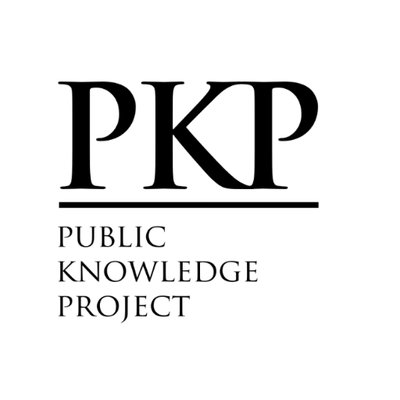Does the development of financial system influence the level of inflation?
A critical survey
DOI:
https://doi.org/10.59051/joaf.v14i2.637Keywords:
Financial system, inflation, GMM system, performance, spilloversAbstract
Purpose: The objective of this paper is to examine the impact of financial development on inflation in the Economic and Monetary Community of Central Africa.
Method: We use a system GMM as an empirical strategy, using data from the BEAC and WDI databases over the period 1996–2022.
Results: The main results of this study show that despite the low level of inflation observed in the Economic and Monetary Community of Central Africa, the credit risk associated with the provision of credit increases inflation. This increase in inflation reduces the performance of the financial sector.
Originality of the article: The originality of this article lies in the fact that the central bank must consider financial development as a tool of prudential analysis, which makes it possible to increase the effectiveness of the fight against inflation while improving the performance of the financial sector. This study also shows that financial development is a determinant of inflation.
Downloads
References
Abbey, E. N. (2012). Inflation and Financial Development: Evidence. American Journal of Economics and Business Administration, 4(4), 2012. https://doi.org/10.3844/ajebasp.2012.227.236
Aglietta, M., & Scialom, L. (2009). Permanence and Innovation in Central Banking Policy for Financial Stability. In Financial Institutions and Markets (pp. 187–211). Palgrave Macmillan US. https://doi.org/10.1057/9780230103245_8
and, Y. K.-I. R. J. of F., & 2009, undefined. (n.d.). Inflation and financial development: Cointegration and causality analysis for the UEMOA countries.
Antonin, C., Levasseur, S., & Touzé, V. (2019). L’Union bancaire face au défi des prêts non performants. Revue de l’OFCE, N° 158(4), 227–252. https://doi.org/10.3917/reof.158.0227
Arellano, M., studies, S. B.-T. review of economic, & 1991, undefined. (n.d.). Some tests of specification for panel data: Monte Carlo evidence and an application to employment equations. Academic.Oup.Com. Retrieved August 29, 2022, from https://academic.oup.com/restud/article-abstract/58/2/277/1563354
Batayneh, K., Al Salamat, W., & Momani, M. Q. (2021). The impact of inflation on the financial sector development: Empirical evidence from Jordan. Taylor & Francis, 9(1). https://doi.org/10.1080/23322039.2021.1970869
Bikai, J. L., & Essiane, P.-N. D. (2018). Politique monétaire, stabilité monétaire et croissance économique dans la CEMAC : une approche SVAR bayésienne. https://www.researchgate.net/publication/330041804
Blundell, R., & Bond, S. (1998). Initial conditions and moment restrictions in dynamic panel data models. In Journal of Econometrics (Vol. 87). https://www.sciencedirect.com/science/article/pii/S0304407698000098
Boyd, J. H., Levine, R., & Smith, B. D. (2000). The Impact of Inflation on Financial Sector Performance*. In Elsevier. https://www.sciencedirect.com/science/article/pii/S0304393201000496
Cecchetti, S., & Krause, S. (2001). Financial structure, macroeconomic stability and monetary policy. https://www.nber.org/papers/w8354
Creel, J., Hubert, P., & Labondance, F. (2016). The Intertwining of Bank Credit and Bank Instability. https://www.boeckler.de/pdf/v_2016_10_22_creel.pdf
Effiong, E. L., Esu, G. E., & Chuku, C. (2020). Financial development and monetary policy effectiveness in Africa. Journal of Social and Economic Development, 22(1), 160–181. https://doi.org/10.1007/s40847-020-00098-x
Finance, G. K.-J. of I. M. and, & 1999, undefined. (n.d.). Openness and the effects of monetary policy. Elsevier. Retrieved August 29, 2022, from https://www.sciencedirect.com/science/article/pii/S0261560698000370
Foglia, M. (2022). Non-Performing Loans and Macroeconomics Factors: The Italian Case. Mdpi.Com. https://doi.org/10.3390/risks10010021
Gaffard, J., d’economie, M. N.-R. francaise, & 2018, undefined. (n.d.). Hétérogénéité des agents, interconnexions financières et politique monétaire: une approche non conventionnelle. Cairn.Info. Retrieved August 29, 2022, from https://www.cairn.info/revue-francaise-d-economie-2018-3-page-201.htm
Gallic, E., Poutineau, J., économique, G. V.-R., & 2017, undefined. (n.d.). L’impact de la crise financière sur la performance de la politique monétaire conventionnelle de la zone euro. Cairn.Info. Retrieved August 29, 2022, from https://www.cairn.info/revue-economique-2017-HS1-page-63.html
Geoffroy, P., & Nyanda, N. (2021). Déterminants et effets économiques de l’inflation dans la CEMAC Déterminants et effets économiques de l’inflation dans la CEMAC Determinants and economic effects of inflation in CEMAC. Journal of Academic Finance, 12. https://www.scientific-society.com/journal/index.php/AF/article/view/427
Kim, D.-H., Lin, S.-C., & Suen, Y.-B. (n.d.). Dynamic Relationship between Inflation and Financial Development. In cambridge.org. Retrieved August 29, 2022, from https://www.cambridge.org/core/journals/macroeconomic-dynamics/article/dynamic-relationship-between-inflation-and-financial-development/6E4CE737BBD37D55C3E939B22F61D6A1
Korinek, A., & Sandri, D. (2014). NBER WORKING PAPER SERIES CAPITAL CONTROLS OR MACROPRUDENTIAL REGULATION? Capital Controls or Macroprudential Regulation? http://www.nber.org/papers/w20805
Krause, S., & Rioja, F. (2006). Financial Development and Monetary Policy Efficiency. In Citeseer. https://citeseerx.ist.psu.edu/viewdoc/download?doi=10.1.1.460.8335&rep=rep1&type=pdf
Ma, Y. (2018). Financial Development, Financial Structure, and the Growth Effect of Monetary Policy: International Evidence. Global Economic Review, 47(4), 395–418. https://doi.org/10.1080/1226508X.2018.1521297
Minegishi, M., & Cournède, B. (2010). Monetary Policy Responses to the Crisis and Exit Strategies. https://doi.org/10.1787/5kml6xm7qgs6-en
Noumba, I., & Enguene, A. A. (2022). The Effects of Minimum Bank Capital and Governance on the Financing of the EMCCA Economies. In Monetary and Financial Systems in Africa (pp. 143–168). Springer International Publishing. https://doi.org/10.1007/978-3-030-96225-8_7
Roodman, D. (2009). How to do xtabond2: An introduction to difference and system GMM in Stata. Stata Journal, 9(1), 86–136. https://doi.org/10.1177/1536867x0900900106
Rousseau, P. L., & Wachtel, P. (2002). Inflation thresholds and the finance-growth nexus. In Journal of International Money and Finance (Vol. 21). www.elsevier.com/locate/econbase
Scialom, L. (2010). Économie bancaire: La meilleure synthése actuelle sur l’économie bancaire.
Shin, Y., Bildirici, M., Do ANGO, S., Marius Amba Oyon, C., So Im, K., & Hashem Pesaran, M. (2003). Testing for Unit Roots in Heterogeneous Panels Related papers Second Generat ion Panel Unit Root Test s Deniz Erer Real Cost of Employment and Turkish Labour Market : A Panel Coint egrat ion Test s Approach A PANIC At t ack on Inflat ion and Unemployment in Africa: Analysis of Persist ence and Convergence Testing for unit roots in heterogeneous panels. Journal of Econometrics, 115, 53–74. https://doi.org/10.1016/S0304-4076(03)00092-7
Spyromitros, E., Letters, P. T.-F. R., & 2019, undefined. (n.d.). Credit expansion in a monetary policy game: Implications of the valuation haircut framework. Elsevier. Retrieved August 30, 2022, from https://www.sciencedirect.com/science/article/pii/S1544612317305536
Vol., B. B.-, No., undefined, hlm, undefined, & 2005, undefined. (n.d.). Econometric analysis of panel data 3rd Edition England JW &Sons.
Downloads
Published
How to Cite
Issue
Section
License
Copyright (c) 2023 ANDRE ARNAUD ENGUENE, MBANGA PAGAL Emmanuel Dorcas, WEPAGUIEWE Armel Romaric

This work is licensed under a Creative Commons Attribution-NonCommercial-NoDerivatives 4.0 International License.
Authors who publish with this journal agree to the following terms:
- Authors retain copyright and grant the journal right of first publication with the work simultaneously licensed under a Creative Commons Attribution License that allows others to share the work with an acknowledgement of the work's authorship and initial publication in this journal.
- Authors are able to enter into separate, additional contractual arrangements for the non-exclusive distribution of the journal's published version of the work (e.g., post it to an institutional repository or publish it in a book), with an acknowledgement of its initial publication in this journal.
- Authors are permitted and encouraged to post their work online (e.g., in institutional repositories or on their website) prior to and during the submission process, as it can lead to productive exchanges, as well as earlier and greater citation of published work (See The Effect of Open Access).






















